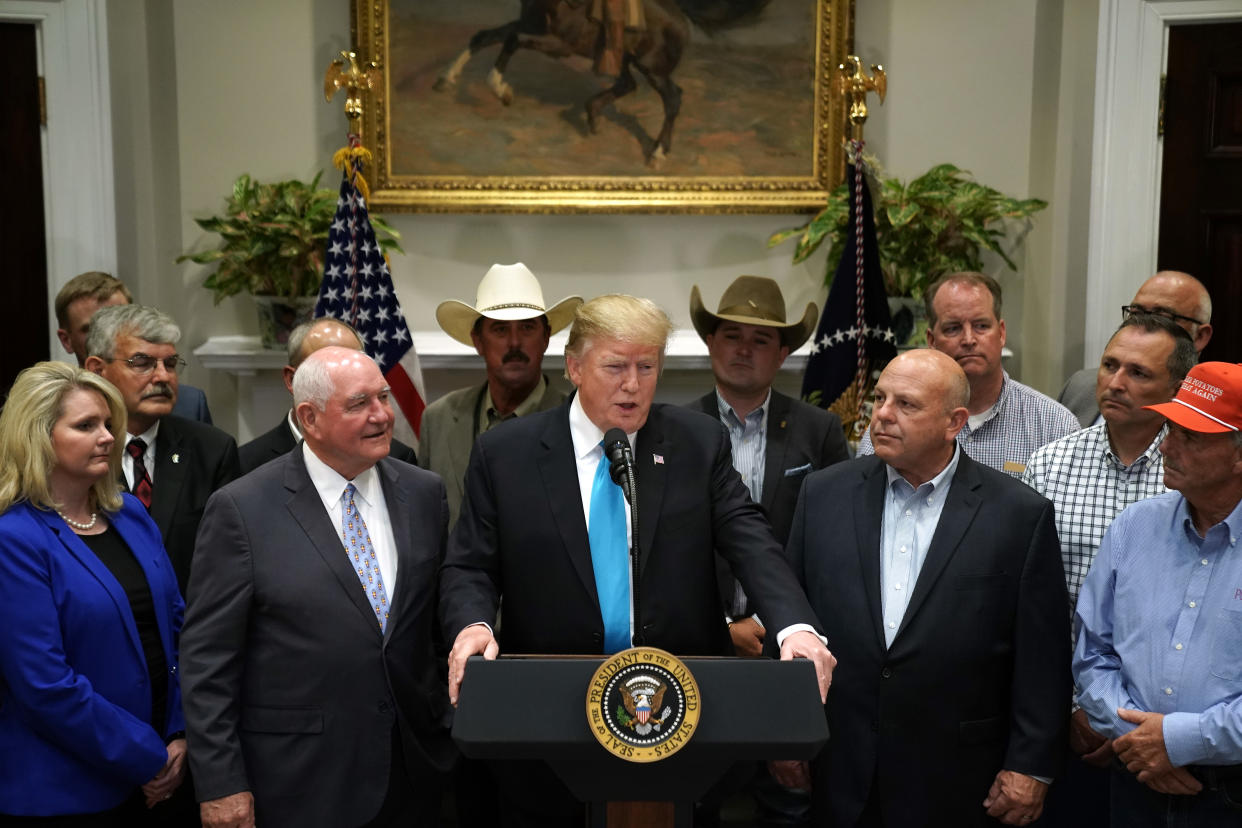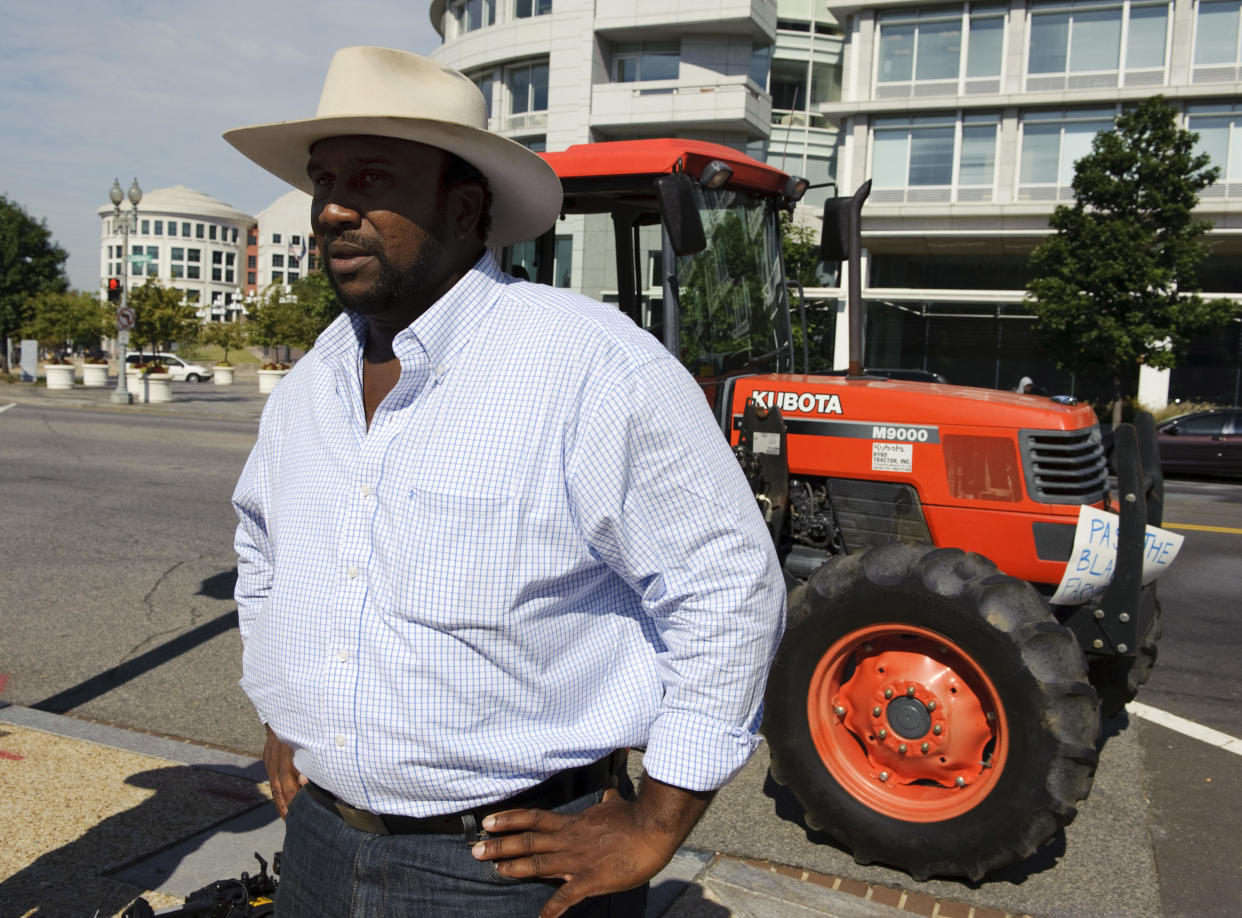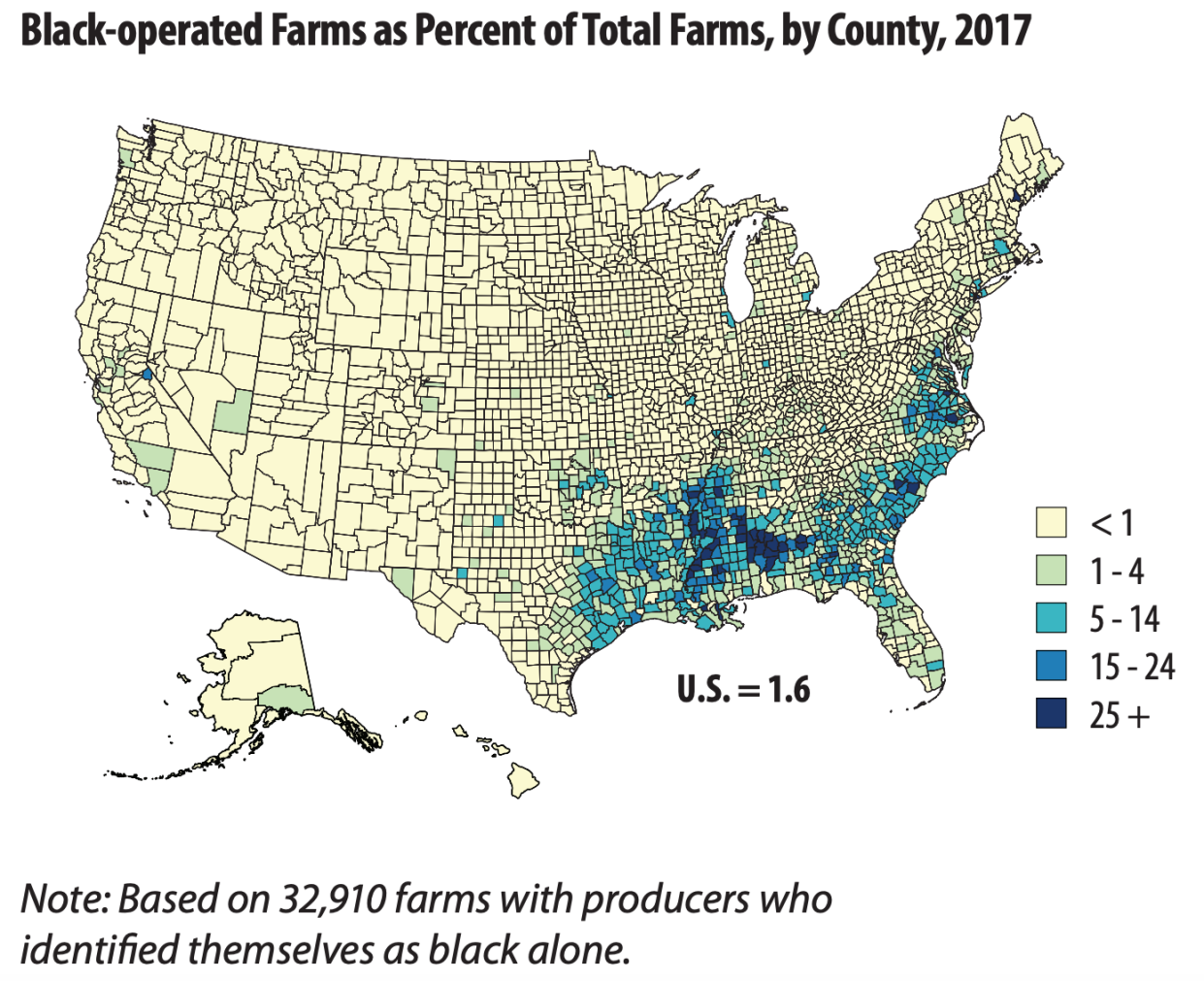Exclusive: New farm legislation would overhaul how the U.S. tracks and reports subsidies
A new bill would require the U.S. Department of Agriculture (USDA) to make fundamental changes to how the agency tracks the aid provided to farmers across the country, Yahoo Finance has learned.
The Farm Subsidy Transparency Act, introduced by Rep. Bobby Rush (D-IL) and Sen. Cory Booker (D-NJ), would “direct the Secretary of Agriculture to track the distribution of all farm subsidies by race, gender, and size of the farm operation and to make such information about farm subsidies to the public.”
Additionally, USDA would be required to track the race and gender of individuals who applied for benefits but were denied and make all of this information publicly available on an annual basis.
“We need to have transparency in the affairs of the U.S. Department of Agriculture, particularly as it relates to minority loans and minority subsidies,” Rep. Rush, who serves on the House Agriculture Committee and was born on a farm, told Yahoo Finance. “We need to have some bright light shone … we need to know whether or not these funds have been issued evenly.”
If the funds aren’t being fairly distributed, Rush added, “we need to bring that to a screeching halt because this COVID-19 pandemic, we’ve seen gross inequities in our nation… My bill is meant to remove [and] correct structural inequities that exist in the American farm system and in the Department of Agriculture."

'Socially disadvantaged farmers have struggled to fully succeed due to systemic discrimination'
The legislation comes on the heels of the $1.9 trillion American Rescue Plan, which directed roughly $4 billion in relief to “socially disadvantaged” farmers after they were largely left out of the roughly $50 billion in government aid provided to farmers during the Trump administration.
Up to 120% of these farmers’ outstanding debts will be paid off under the stimulus bill, with the extra 20% going toward taxes associated with the outstanding debt. An additional $1.01 billion was allocated for outreach, training, education, technical assistance, grants and loans, and funding for improving land access.
According to USDA spokesperson, Matt Herrick, “direct farm loans to Black farmers fell by more than half under the previous administration and just 00.09% of the $26 billion in direct payments to all farmers [under the Coronavirus Food Assistance Program] went to Black farmers under the previous administration.”
During the Trump administration's trade war with China, the USDA created the market facilitation program (MFP) to offset the adverse effects of punitive tariffs, directing about $24 billion to American farmers. About 99.5% of the initial payments reportedly went to white farmers.

In 2020, during the coronavirus pandemic, the USDA established the Coronavirus Food Assistance Program (CFAP) to provide billions of dollars in relief to farmers heavily impacted. A report by the Environmental Working Group found that as of October 2020, nearly 97% of the $9.2 billion in CFAP aid that had been distributed went to white farmers, who received on average eight times more in aid ($3,398) than the average Black farmer ($422).
“We know that socially disadvantaged farmers have struggled to fully succeed due to systemic discrimination and a cycle of debt that began decades ago and was only made worse by COVID-19,” Herrick, the USDA spokesperson, told Yahoo Finance.
Several white farmers took issue with the American Rescue Plan's specific stimulus program for socially disadvantaged farmers and are suing the USDA for race-based discrimination, alleging that the loan forgiveness program is a violation under the Constitution.
Rush emphasized that his bill was not in response to the recent lawsuit, but rather in response to “centuries-long discriminatory practices that have been established and traditional of the USDA.”
“Is there some aha moment that occurred in the last year, two years?” he said. “No, absolutely not. There's been a legacy unfortunately, a legacy of ill will, that has been the traditional response to the needs of Black farmers by USDA.”

'A result of structural, systemic racism'
There were nearly 1 million Black farmers in 1920, the most ever, compared to roughly 45,500 Black farmers as of 2019.
With Black farmers accounting for roughly 1.3% of the U.S. farming population, Rush openly wondered: Why are there so many more white farmers in the 21st century?
“There was a situation in the 1920s when we had more Black farmers,” Rush recalled. “So there’s something else wrong with this process, with this formula…. This is a result of structural, systemic racism and the reason for this drop in the number of Black farmers is simply because Black farmers aren’t given the proper amount of assistance, encouragement, and funding that white farmers get.”

According to the Center for Health Law and Policy Innovation at Harvard Law School, "over one million black farmers in the South have been dispossessed of their land" over the last 100 years. "That is a loss of 90% of black land, at least $250-350 billion of wealth and income (10% of current black wealth)."
Black farmers now own just 0.52% of farmland in the country while making less than $40,000 per year on average (compared to white farmers, who make an average of about $190,000 annually).
"You have to really ask the right questions in order to get the right answer," Rush said about the reason for the farm subsidy transparency legislation. "Up to now, we've failed to ask the right questions, and it's pretty simple: How much of the assistance programs... go to Black farmers?"
Adriana Belmonte is a reporter and editor covering politics and health care policy for Yahoo Finance. You can follow her on Twitter @adrianambells and reach her at adriana@yahoofinance.com.
READ MORE:
White farmers sue U.S. government over stimulus for 'socially disadvantaged farmers'
Black farmers, left out of Trump's bailout, find relief in Biden stimulus bill
Trump's massive farmer bailout failed to make up for the 'self-inflicted' trade damage
Read the latest financial and business news from Yahoo Finance
Follow Yahoo Finance on Twitter, Facebook, Instagram, Flipboard, LinkedIn, YouTube, and reddit.
